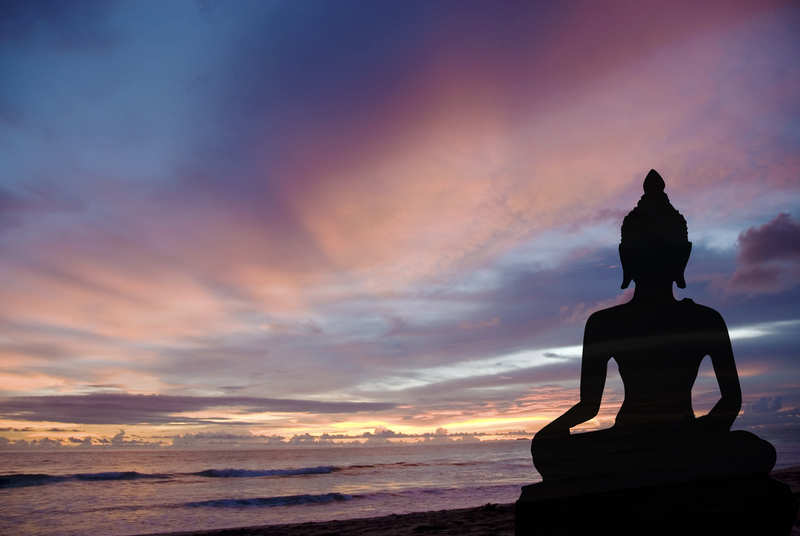Vipassana Mindfulness Meditation –
Stress Relief and Peace of Mind Without Drugs 
Siddartha Gotama (the Buddha) discovered Vipassana mindfulness meditation around 2,500 B.C. Science didn’t figure it out until just a few years ago. Now it’s all over the news. Doctors, psychologists, and counselors are scrambling to include it in their treatments.
So what exactly is it? Why does it improve our brain function, elevate our mood, and give us a taste of the spiritual life?
How to Meditate
Mindfulness meditation is a mental technique, not a religion. You learn to sit silently and practice observing all thoughts and body sensations as they arise and pass away. You don’t react. You simply observe.
You soon realize that all your thoughts and feelings are impermanent. They come and go like clouds. You don’t resist uncomfortable feelings, and you don’t cling to pleasant ones. You don’t have to figure anything out mentally. You just learn to enjoy the process of observing all this energy.
Gradually your nervous system starts to calm down. Your stress hormone secretion decreases and your pleasure hormone production increases. You stop suffering from stress. You accept how you feel from moment to moment (even unpleasant thoughts and feelings) instead of resisting everything and tying yourself up in knots. Meditators call this equanimity, the natural ability to go with the flow of experience. It feels like a miracle that happens without drugs, doctors, or therapists.
Here is a popular formula for how mindfulness meditation works, from master teacher Shinzen Young of Vipassana Support international:
Pain + Resistance = Stress & Suffering
Pain + Mindful Acceptance = Equanimity
Mindfulness meditation requires no special skills or aptitude. It is safer and less expensive than psychopharmaceuticals or street drugs and less expensive and faster than psychotherapy. Once you learn the technique, you have it for a lifetime. You can start going to meditation retreats, attend a local meditators’ group (sangha), and make like-minded friends on the meditative path.
The technique should be practiced daily for a minimum of ten minutes. Check out www.shinzen.org and the Shinzen Young Channel on YouTube for more information.
[/vc_column][/vc_row]